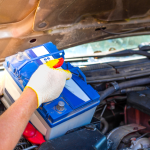Riding a motorcycle in a group or even solo can be an exhilarating experience, but safety should always be a top priority. One key aspect of safe riding is effective communication with other riders and drivers on the road. Motorcycle hand signals are a universal language that allows riders to convey their intentions clearly and quickly. In this article, we will explore essential safety tips related to motorcycle hand signals, ensuring you are well-prepared for your next ride.
1. The Importance of Motorcycle Hand Signals
Enhancing Communication Among Riders
Motorcycle hand signals play a vital role in enhancing communication among riders, especially when riding in a group. Unlike cars, motorcycles lack built-in turn signals and brake lights, making hand signals an essential tool for indicating turns, stops, and lane changes. By using standardized hand signals, riders can quickly and effectively communicate their intentions to others on the road.
Effective communication through hand signals helps prevent misunderstandings and reduces the risk of accidents. When all riders in a group use the same signals, it ensures a coordinated and safe riding experience. It’s important to familiarize yourself with these signals and practice them regularly to ensure smooth communication during rides.
Legal and Safety Considerations
Using motorcycle hand signals is not just a matter of convenience; it’s a legal requirement in many regions. In areas where motorcycle hand signals are mandated by law, failing to use them can result in fines or other penalties. Additionally, using hand signals enhances your visibility to other road users, making your actions more predictable and reducing the likelihood of collisions.
Hand signals also provide an added layer of safety in situations where electronic signals may be obscured or malfunctioning. For example, if your motorcycle’s turn signal lights are not functioning properly, hand signals can serve as an effective backup method for communicating your intentions to other drivers. By incorporating hand signals into your riding routine, you prioritize safety for yourself and others on the road.
Read More: A Look at 2025 KTM and Husqvarna Electric Streetbikes
2. Essential Motorcycle Hand Signals
Left and Right Turn Signals
The left turn signal is a fundamental motorcycle hand signal that every rider should know. To indicate a left turn, extend your left arm straight out to the side, parallel to the ground. This signal alerts other riders and drivers of your intention to make a left turn, allowing them to anticipate your movements.
The right turn signal is equally important and is executed by extending your left arm out and bending it at a 90-degree angle, with your hand pointing upward. This signal communicates your intention to make a right turn. Using these signals well in advance of the turn helps ensure a safe and coordinated maneuver.
Stop and Slow Down Signals
The stop signal is used to indicate that you are coming to a complete stop. To execute this motorcycle hand signal, extend your left arm out to the side and bend it downward at a 90-degree angle, with your palm facing the rear. This signal is crucial for alerting riders behind you to prepare for a stop.
To signal that you are slowing down, extend your left arm out to the side with your palm facing downward and move your hand up and down in a patting motion. This signal helps riders behind you adjust their speed accordingly, preventing sudden braking and potential accidents. Consistently using these signals improves safety and coordination among riders.
3. Group Riding Hand Signals
Follow Me and Hazard in the Road
When riding in a group, the “Follow Me” signal is used by the lead rider to indicate that others should follow their lead. To execute this signal, the lead rider points to the sky with their left hand and makes a circular motion. This motorcycle hand signal ensures that the group stays together and follows the intended route.
The “Hazard in the Road” signal is crucial for alerting other riders to potential dangers such as potholes, debris, or animals on the road. To indicate a hazard, point with your left hand to the location of the hazard on the road. This signal allows riders behind you to anticipate and safely navigate around the obstacle.
Single File and Double File Formation
The “Single File” signal is used to indicate that the group should ride in a single file line, usually for safety reasons or when navigating narrow roads. To execute this motorcycle hand signal, extend your left arm straight up with your index finger pointing upward. This signal ensures that riders adjust their formation and maintain a safe following distance.
The “Double File” signal is used to indicate that the group should ride in a staggered formation, with two lines of riders. To signal this formation, extend your left arm upward with two fingers pointing up in a “V” shape. Riding in a double file formation increases visibility and allows for better communication within the group.
4. Safety Tips for Using Motorcycle Hand Signals
Practice and Consistency
Consistent practice of motorcycle hand signals is essential for effective communication on the road. Take the time to familiarize yourself with the standard signals and practice them regularly, both on and off the motorcycle. Practicing in a controlled environment, such as a parking lot, can help build muscle memory and confidence in executing the signals correctly.
Consistency is key when using hand signals. Ensure that you use the same signals every time to avoid confusion among other riders and drivers. Consistent use of hand signals not only enhances communication but also reinforces safe riding habits. Make hand signals a natural part of your riding routine for improved safety and coordination.
Situational Awareness and Visibility
When using motorcycle hand signals, it’s important to maintain situational awareness and ensure that you are visible to other road users. Before executing a hand signal, check your surroundings to ensure it is safe to do so. Be aware of blind spots and ensure that other riders and drivers can see your signals clearly.
Visibility is crucial when using hand signals, especially in low-light conditions or adverse weather. Consider wearing reflective gear or using signal-enhancing gloves to improve the visibility of your signals. By maintaining situational awareness and prioritizing visibility, you enhance the effectiveness of your hand signals and contribute to a safer riding environment.
5. Adapting Hand Signals to Different Situations
Using Hand Signals in Heavy Traffic
In heavy traffic, using motorcycle hand signals becomes even more critical for communicating your intentions to other drivers and riders. Be sure to execute your signals early and clearly to give others ample time to react. In congested areas, use your signals conservatively and focus on maintaining a safe following distance.
When navigating through traffic, it’s essential to be aware of the vehicles around you and anticipate their movements. Use your signals to communicate lane changes, turns, and stops, and be prepared to adjust your actions based on the flow of traffic. Effective use of hand signals in heavy traffic enhances safety and reduces the risk of accidents.
Adapting Signals for Off-Road Riding
Off-road riding presents unique challenges that require adaptation of motorcycle hand signals for effective communication. In off-road environments, visibility may be reduced due to dust, mud, or foliage, making clear signals even more important. Use exaggerated motions to ensure your signals are visible to other riders.
When riding in a group off-road, signals for obstacles, stops, and changes in direction are crucial for maintaining safety and coordination. Be sure to communicate any changes in terrain or potential hazards to the riders behind you. Adapting your hand signals to the specific conditions of off-road riding ensures a safer and more enjoyable experience for everyone.
Conclusion
Mastering motorcycle hand signals is an essential skill for every rider. These signals enhance communication, improve safety, and contribute to a more enjoyable riding experience. By understanding and practicing these essential safety tips, you can confidently communicate your intentions and navigate the road with ease. Whether you’re riding in a group or solo, effective use of hand signals is a crucial aspect of safe and responsible motorcycling.











